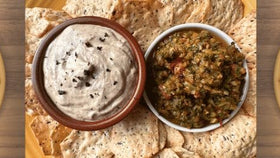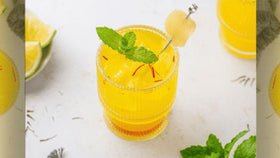The World's Best Vanilla Beans
Where do the worlds best vanilla beans come from?
Good question! The team at SLOFOODgroup, has been wondering the same thing since first introduced to vanilla beans as young chefs and culinarians. The answer is quite elusive and consists of many possibilities. Having spent the last several years traveling the globe in search of the world's best vanilla beans we've discovered a simple truth—there is no single absolute best vanilla bean variety but there are many spectacular vanilla beans out there.
World class vanilla beans come from Madagascar, Tahiti, Uganda, Papua New Guinea, and beyond
What makes a vanilla bean great? We have found a few contributing factors, but most importantly are the people and communities. Vanilla is the world's second most laborious spice (only falling behind saffron). To produce truly great quality in vanilla beans, though, there are a few other key variables that require attention. Only when all these things are in place will the finest beans be cultivated and put to market, providing a sustainable source of income for communities around the globe and giving them hope for a better future.
Shop Our Gourmet Grade-A & Grade-B Vanilla Beans
So what are the factors that result in a superior quality of vanilla beans?
Harvesting pods only when they are fully ripe
Picking the vanilla bean at just the right time is essential. It is the right time when the vanilla pod begins to yellow and loses its bright green luster. This results in vanilla that has fully matured naturally and will yield higher levels of the active chemical compounds that influence flavor, aroma, and stability.
Following traditional curing techniques
Traditional curing of vanilla consists of several steps. The method of curing may differ based on the type of vanilla bean. In the case of most Planifolia varieties, such as vanilla from Madagascar, upon harvesting, the pods are cooked in water. Tahitensis varieties, on the other hand, are laid out for gentle sunning, as is the case with this vanilla from Tahiti. Both methods have the same purpose—to begin the browning and killing process.
After the initial killing of the vanilla beans, the pods are wrapped in wool or canvas blankets and allowed to sweat for a small period of time before they are brought back into the sun to heat the vanilla beans to where the pods are warm to the touch. This process can last several weeks or more depending on the weather and regional conditions.
From there, the vanilla pods are dried further in the shade to reduce the water content and assist in the stabilization the vanilla beans. Once they have reached optimal moisture content they are transferred from shade drying to inbox conditioning and allowed to further age and develop their aromatic properties. This portion of the process lasts for several weeks to several months., upon which point the vanilla beans are ready to be packaged, sold, and distributed.
But where do the world's best vanilla beans come from?
For SLOFOODgroup, the answer to this question is easy. The best vanilla beans come to us by supporting the people and communities sustainably producing these fragrant edible treasures—those who put their hearts and souls into ensuring care has been taken in every step of their process. By supporting them, not only are we sourcing the finest quality vanilla beans, we are fueling our own quest to improve lives through the fruiting vine of the vanilla orchid. We have been fortunate to form great relationships with families, farmers, and preparers of vanilla that provide education, jobs, and economic assistance to places long forgotten and seeming untouched by time.
We hope you decide to join us in this quest by continuing to support natural vanilla products and the people who make it possible.








Slofoodgroup
Author